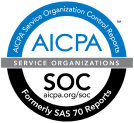As RxInformer celebrates 15 years of publication, the editorial staff looked back at past issues to review how the various insights and trends we’ve reported on in the workers’ comp industry have evolved. While many things have changed, some have stayed the same.
The focus of the workers’ comp industry remains the same – to improve patient care by optimizing claims management while controlling costs – but many of the trends that constitute obstacles, considerations, and pathways forward have changed.
Here are eight reflections on the workers’ comp industry across the last 15 years.
1. The Opioid Epidemic United Us
Workers’ comp was one of many forces that banded together to fight the opioid epidemic, and opioid management dominated our industry. Many lives were lost, families were forever affected, and significant financial resources were spent to help those struggling.
RxInformer began covering the opioid epidemic going back to its first issue in 2010, and as the epidemic progressed, the Fall 2013 edition of RxInformer featured six different articles based around opioids. RxInformer was just one voice among many in the industry, but it covered many opioid-related topics in a few short years, including:
- New opioid drug approvals, including ill-fated “safer” and “abuse-deterrent” opioids
- Education on treatment guidelines and patient-specific treatment plans
- Prescribing trends – overall, across medical specialty, and among different patient populations
- Opioid warning signs, predictive models for misuse, and intervention points
- Dependence, abuse, and addiction
- Guides on how to taper opioids, including opioid detox
- Opioid overdose risks and reversal medications
- Dangerous drug combinations that include opioids, and populations at high risk
- Legislation and policy trends, including PDMPs, prescription limits, state-mandated treatment guidelines, and new requirements for physician education
- The need for a more comprehensive pain management model that incorporates alternative pain medications and pain modalities
As the years went on, the tide began to turn. By the Summer 2018 edition of RxInformer, for the first time there was not a single article dedicated primarily to opioids. The battle still raged, and the scars of the epidemic had educated many as to the concerns with these drugs, but enough frameworks and strategies had been built to begin gaining significant ground.
Opioid utilization began to trend down thanks to the hard work of so many different united stakeholders, and as prescribers shifted away from opioids, there’s been a greater diversity in drug therapy for pain management. This has contributed to multiple other, diffuse drug therapy trends, each with unique considerations.
But due to the nature of injury, there will always be a need to keep an eye on opioid utilization, and it remains a focus for many payers for their pharmacy management programs as evidenced by the fact that opioid/substance abuse control and prevention ranked as the #1 pharmacy management priority in our 2025 Industry Insights Survey Report.
2. Managing Claims Complexity Becomes More Nuanced
The concept of complex claims, or 10-15% of claims driving 80% of medical spend, is not a new one. However, factors that are considered complexities or risks within claims have grown significantly more nuanced in terms of how claims organizations are identifying and addressing them.
Historically, medical management has primarily focused on the injury that ushered patients into the workers’ comp system and the medical treatment of that injury.
Using pharmacy management as an example, this includes managing therapeutic concerns such as inappropriate opioid utilization, excessive polypharmacy, dangerous drug combinations, and other risks that present harm to the injured worker and a potential detriment to claim outcomes.






